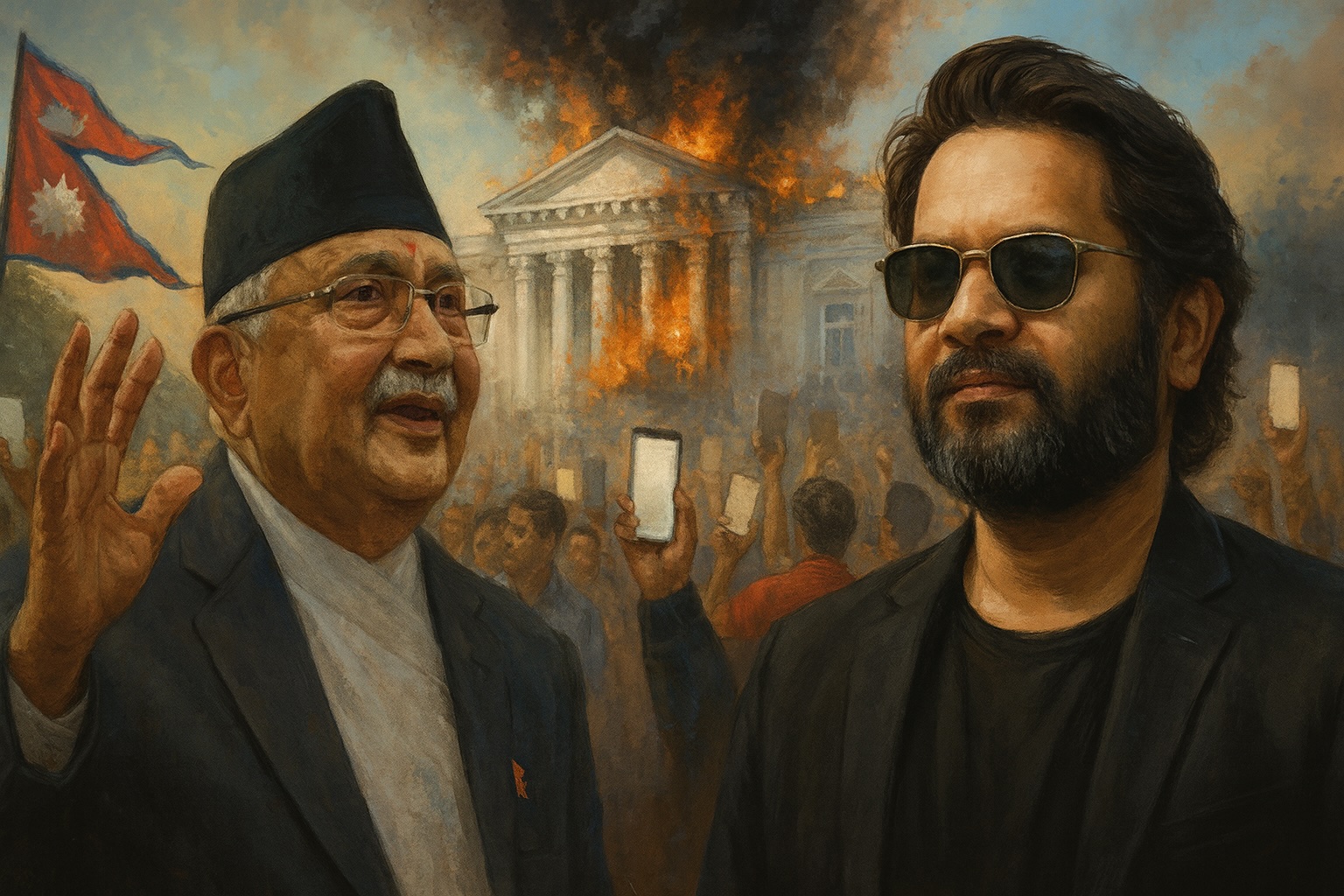Nepal’s Gen Z Revolt: Youth Uprising Reshapes Power, Forces Oli Out, and Puts Nepal Army at the Helm

Nepal is witnessing one of its most defining political upheavals in decades, a youth-led revolt that began with a fight for digital freedoms but has transformed into a broader battle against corruption, elite impunity, and political stagnation. What started as protests over the government’s sudden ban on 26 social media platforms, including Facebook, Instagram, YouTube, and X, spiraled into a nationwide uprising dominated by Gen Z demonstrators—a movement so swift and decentralized that it caught the entire state apparatus off guard.
At the heart of this unrest lies the resignation of Prime Minister K.P. Sharma Oli after weeks of escalating demonstrations and deadly crackdowns. Security forces opened fire on protesters in Kathmandu and other major cities, leaving at least 19 people dead and hundreds injured. The violence forced the government to lift the social media ban, but by then, the uprising had evolved far beyond its digital trigger. Protesters were no longer just demanding unrestricted access to platforms—they were demanding accountability, transparency, and an overhaul of Nepal’s entrenched political class.
As protests intensified, the Nepal Army assumed a pivotal role in securing the nation’s power centers. Tribhuvan International Airport came under direct military control amid fears of sabotage, curfews were imposed across Kathmandu Valley, and senior state officials—including the President—were quietly moved to military-secured zones. With security forces stretched thin, the Army’s logistical capacity and command structure became central to maintaining order, underscoring its enduring influence in Nepal’s governance during crises.
The generational clash at the center of this movement runs deep. For young Nepalis—digital natives born after the 1990 democratic transition and the 2006 civil war settlement—the old guard has failed to deliver on its promises. Youth unemployment hovers around 20%, forcing millions to migrate abroad for work. Widespread corruption, opaque governance, and a lack of economic opportunities have bred frustration. When the government tried to restrict the platforms where this generation organizes, communicates, and finds solidarity, it crossed an unspoken red line.
The Gen Z movement is unique in its form: leaderless, hyperconnected, and meme-driven, yet laser-focused on systemic change. Organizers rapidly switched to encrypted apps, bypassed censorship, and coordinated flash mobs and sit-ins across Kathmandu, Pokhara, and Biratnagar. Within days, city squares filled with thousands waving handwritten placards calling for “digital freedom,” “jobs not promises,” and “accountability, now.” Unlike previous movements, this uprising is less tethered to political parties and more grounded in a collective rejection of “politics as usual.”
Institutional responses have been mixed. While the government initially framed the platform ban as a regulatory step to curb misinformation, critics view it as an overreach designed to silence dissent. Rights groups, student unions, and civic networks have condemned the excessive use of force, demanding independent investigations into protester deaths. Internationally, the United Nations and several rights bodies have urged restraint and called for transparent inquiries, warning that Nepal’s democratic credibility is at stake.
In the leadership vacuum left by Oli’s resignation, alternative political figures are emerging. Kathmandu Mayor Balendra Shah (Balen) has become a symbolic figure for many young protesters, even though he has distanced himself from direct involvement in organizing the demonstrations. Former Prime Minister Baburam Bhattarai has also entered discussions around possible interim arrangements, while political parties quietly negotiate realignments behind closed doors. Yet the youth on the streets remain skeptical of any solution brokered by the same establishment they are rebelling against.
For the Nepal Army, the stakes are equally high. While its intervention has been framed as essential for stability, its visible role in securing state institutions also raises concerns about civil-military balance. The Army now faces a delicate challenge: maintaining peace without being perceived as a political actor. Its ability to act as a stabilizing force without overstepping its mandate could define Nepal’s democratic trajectory in the months ahead.
The Gen Z uprising is not merely a reaction to censorship—it reflects a deeper structural fracture between an empowered, digitally networked youth and a political class resistant to reform. Whether this momentum produces lasting institutional change or fades into co-optation depends on what comes next: credible investigations, tangible policy reforms, and economic pathways for the generation driving the movement. Without these, the fault lines exposed by this revolt will only widen, and future eruptions could prove even harder to contain.
Gen-Z



![From Kathmandu to the World: How Excel Students Are Winning Big [Admission Open]](https://nepalaaja.com/img/70194/medium/excel-college-info-eng-nep-2342.jpg)
